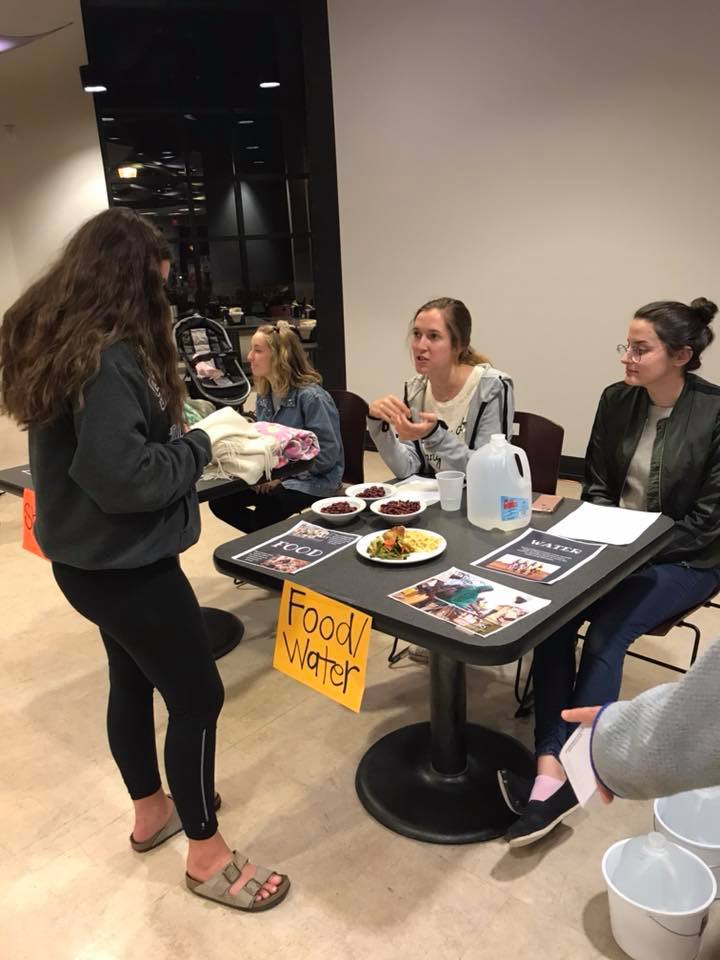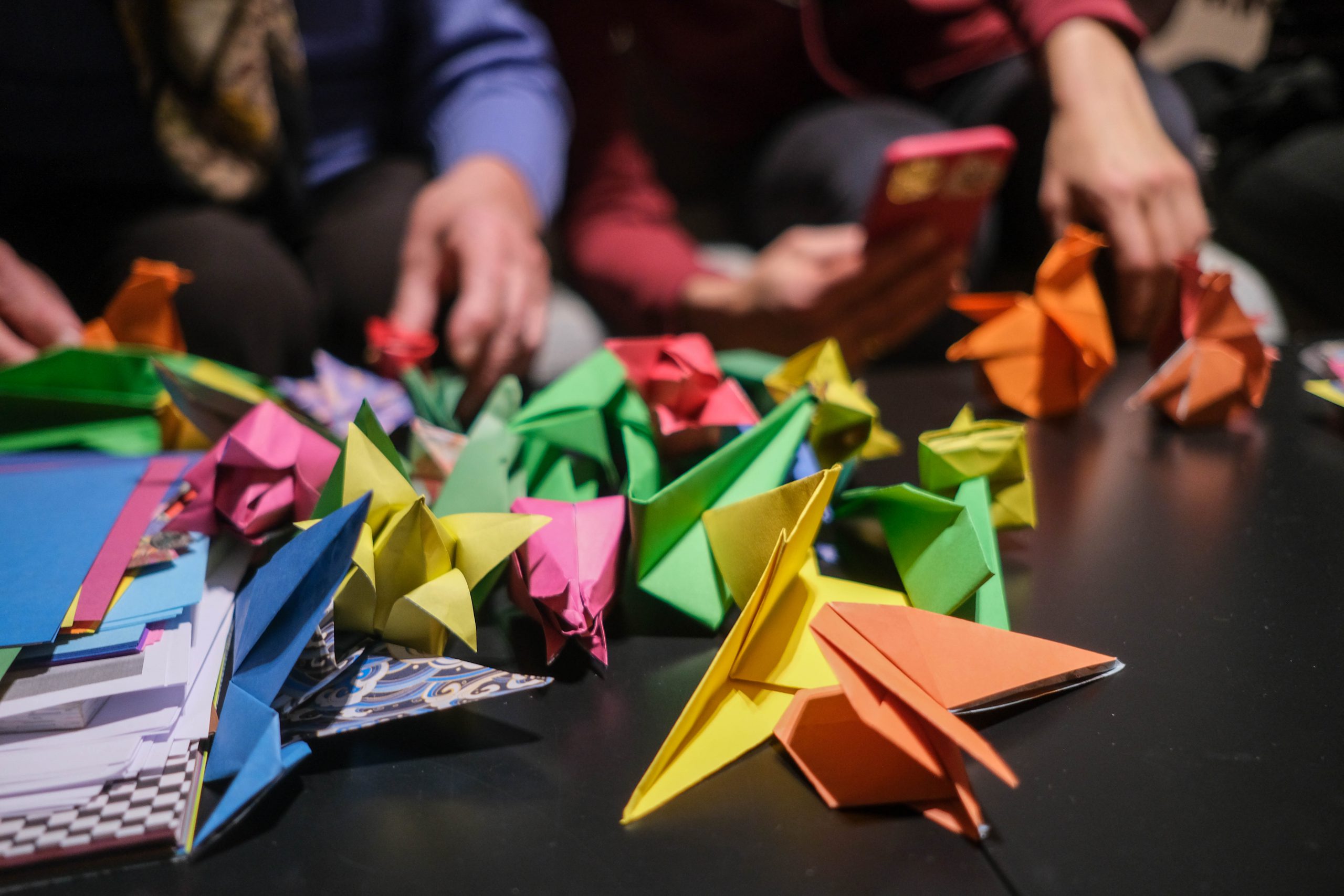USA: ‘Walk a Mile’ in a Refugee’s Shoes
12 September 2016
Today, more than 65 million people are displaced around the world, the most since World War II. While it’s impossible to fully comprehend what it’s like to be forced from your home and live as a refugee, Jesuit Refugee Service/USA has developed a unique program that provides individuals an opportunity to begin to understand the frustrations, disappointments and hopes that face refugees around the world.
The Walk a Mile in My Shoes simulation is a structured event that allows participants to assume the role of refugees and act out some typical activities that a refugee experiences. Giulia McPherson, Director of Advocacy and Operations at JRS/USA, explains the simulation in detail and how schools, parishes and other community and religious groups can get involved.
Question: Giulia, please walk us through the refugee simulation. What can people expect?
Giulia McPherson: Walk a Mile in My Shoes is an opportunity for communities – this can be schools, parishes, any other community organization – to host an engagement opportunity for any individual to get at least a sense of what it might be like to be a refugee. The actual simulation takes place within an hour or so – it depends on the organizer and what they like the specifics to be. But it gives anyone who participates in the simulation an opportunity to learn a bit more about what refugees experience once they’re forced to flee from their homes, what kinds of resources are provided for them through U.N. agencies or nongovernmental agencies like Jesuit Refugee Service, and to think for a moment what it would like to be in that situation, even though it’s extremely difficult for those of us in the U.S. in particular to really understand what it might be like. But this gives them a glimpse of what refugee’s life may be like.
Q: Where did the idea come from?
GM: This is something that JRS has been doing for a number of years. It’s something that we have offered up to schools in particular – several Jesuit schools have hosted simulations over the past several years. It originated as a camp-out experience, so something a bit more intensive, where students would camp outside their school overnight to simulate what it might be like to live in a refugee camp. But now we’ve evolved into more of a what we call a “walk-through” version of the simulation. This also acknowledges the fact that the majority of refugees today don’t actually live in camps, as many of them live in urban areas in their host communities. So the walk-through version that we currently have provides a bit of an insight into those dynamics as well – what it might be like for a refugee to find work or access an education in a host community.
Q: Can you explain the different stations that are found throughout the simulation?
GM: There are seven different stations. This has evolved over the past few months as well, as we’ve added a couple of stations. The first station is an entry border station. So at this station the participant receives an identity card, and the card provided a brief story of an actual refugee that JRS has worked with; it gives their name, their country of origin, the country they fled to and a little bit about their story – why they were forced to leave their home. So the participant in this simulation will receive this card and that will be their identity for the duration of the simulation.
Then they’ll move on to the following six stations: a shelter station, which touches on what kind of housing a refugee might have access to, whether it be in a camp or an urban environment; a food station, which delves into what kind of rations a refugee might receive if they are officially registered as a refugee with the UN; there’s also a water station, as often times refugees in the developing world need to go a distance to find water for themselves and their family; there’s a medical and health station, which talks a little bit about some of the health challenges refugees face, and also touches on the issue of trauma, which many refugees face, particularly if they fled war or conflict. There’s also an education station, which is one of the newer stations we’ve added in particular because this is an area of focus for JRS, as today only about 50 percent of refugee children have access to primary school…
And then the final station is an advocacy station where the simulation participant will have an opportunity to take an advocacy action, (such as) sending letters to their members of Congress or to the president or members of the administration regarding different policy issues or challenges or recommendations that we are making on behalf of refugees.
Q: What do you think surprises people the most when they participate in a simulation?
GM: I think what really surprises them the most are some of the statistics we share… Refugees really are provided with the minimum in terms of being able to exist on a daily basis, and anything above and beyond that is difficult to find. So for example, when our participants see the daily food ration that a refugee might receive, which might just be a bowl of rice and beans, a very small bowl compared to what they may have had for lunch, then that comparison can be really stark for the participant. Just being able to take a moment out of their day and think about and hear about some of these stories is something that a lot of us don’t take the time to do.
Q: What do you hope people come away with after attending a refugee simulation?
GM: We hope for, and what we’ve seen, is that people actually come away from participating from Walk a Mile in My Shoes with the intent and the interest in getting further involved in this work. It can be as simple as just sharing their experience with their family or friends… to wanting to do more in terms of hosting an event or hosting a fundraiser or donating or taking additional advocacy actions. We’ve had a number of community groups and schools host simulations over the past several months and many of them said to us that they want to make this a regular event or that they’d like to have JRS come to their campus, for example, and give a talk to explain in more detail what are the realities of life for a refugee. So we see that the conversation doesn’t quite end during the simulation itself and that they’re really interest in furthering that conversation.
Q: And it doesn’t really cost much to put on a simulation?
GM: We provide a simulation toolkit that includes a chart that outlines exactly the materials that are needed. And so it’s fairly simple. For the shelter station, for example, you can use a tent, you can mark out a space on the floor, and you just need tables for other stations. I mentioned the meals, which is something simple you can grab at the grocery store, and for the other stations a bucket for water, some books and school supplies for the education station and some medical supplies for the health station. It’s really simple, and organizers can make it their own as well. The toolkit is very much a guide, and anyone planning a simulation can make it as innovative or expansive as they like.
Q: The number of simulations JRS has helped put together has spiked just in the last few months. It seems to be an increasingly popular program.
GM: Absolutely. We’re seeing some real appreciation for the program itself. And what we’ve seen is people are really looking for something to do. We’re seeing in the news everyday stories coming out of Syria, sub-Saharan Africa, protracted crises that have gone on for years with refugees fleeing their homes and making really perilous journeys trying to find safety. And many people here in the U.S. are at a loss as to what they can do. And so this is something that is very hands on – anyone with an interest in engaging their community can really take this on. So we’ve seen a spike in interest, absolutely – especially and unfortunately because of what we see happening around the world.
Q: If someone wants to host a refugee simulation, what can they do, how can they get the simulation toolkit?
GM: They can go to our website www.jrsusa.org/outreach. On that page you’ll find a downloadable toolkit for how to host a Walk a Mile in My Shoes simulation. We also are happy to work with anyone who is interested in hosting a simulation as they go through the planning process. So we’d love to hear about anyone who wants to organize a Walk a Mile in My Shoes event.




